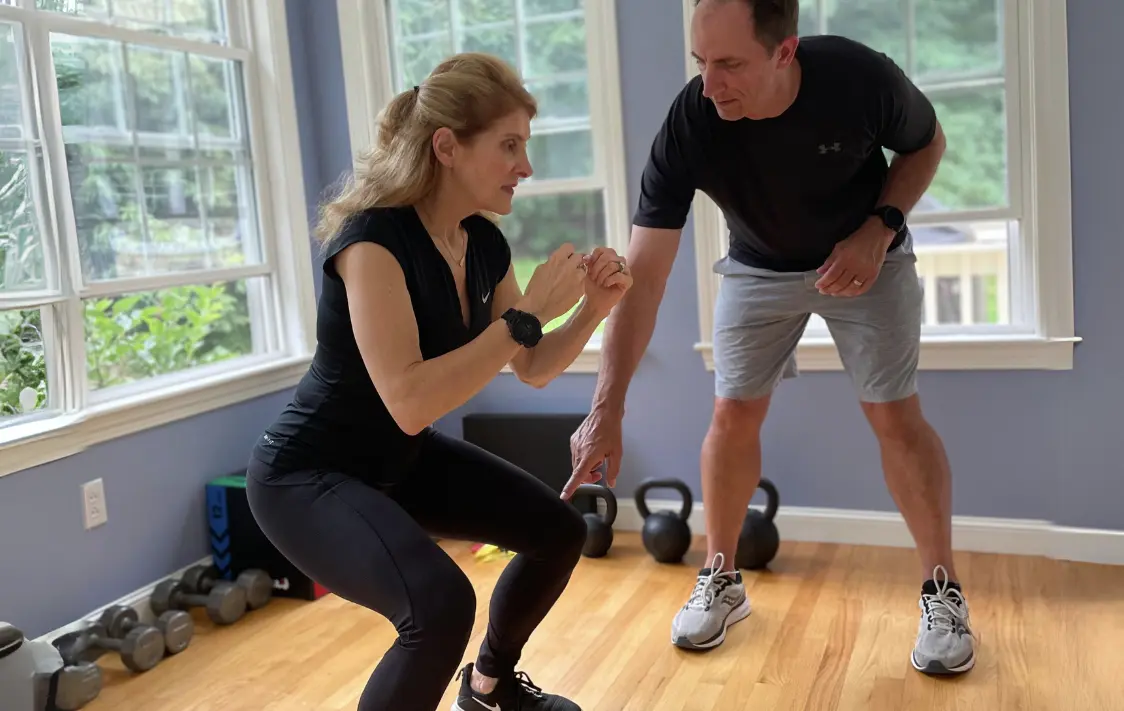Table of Contents
Getting in shape after 40 can be a challenge, but it’s crucial for maintaining overall health and well-being. Regular exercise provides numerous benefits for both physical and mental health, helping you stay energetic and resilient as you age.
Staying Active After 40: Benefits, Tips, and Precautions
Many believe that playing sports after the age of forty can be harmful. This notion is fundamentally incorrect.
In fact, an active lifestyle continues well beyond the age of forty, and sports can be a key part of this. Physical activity at this stage of life provides vitality, energy, and renewed strength for new achievements.
Understanding the Changes in Your Body After 40
Physiological Changes

Decrease in Metabolism: As we age, our metabolism slows down, making it easier to gain weight and harder to lose it.
Reduction in Muscle Mass: Muscle mass naturally decreases with age, which can lead to reduced strength and endurance.
Changes in Joint and Bone Health: Joints may become stiffer and bones may lose density, increasing the risk of injuries and conditions like arthritis.
Importance of Adaptation
Tailoring Workouts to Accommodate Changes: It’s important to modify your workout routine to address these physiological changes, ensuring exercises are safe and effective.
Focus on Injury Prevention: Implementing proper techniques and exercises that protect your joints and bones is essential.
Key Principles for Exercising After 40
Starting Slow and Building Gradually
Importance of Gradual Increase in Intensity: Begin with low-intensity workouts and gradually increase the intensity to prevent injuries and allow your body to adapt.
Consistency Over Intensity
Importance of Regular Exercise: Regularity is key to long-term fitness. Aim for consistency rather than high-intensity workouts.
Creating Sustainable Workout Habits: Develop a workout schedule that fits into your daily routine and stick to it.
Importance of Recovery
Adequate Rest Between Workouts: Ensure you get enough rest between workout sessions to allow your muscles to recover.
Importance of Sleep and Nutrition: Quality sleep and a balanced diet are vital for recovery and overall health.
Recommended Workouts for Men Over 40
Strength Training
Importance of Maintaining Muscle Mass: Strength training helps preserve muscle mass and improve overall strength.
Workout Routine for Men Over 40: Focus on compound movements like squats, deadlifts, and bench presses.
Cardiovascular Exercise
Benefits of Cardio for Heart Health: Cardiovascular exercises improve heart health and endurance.
Flexibility and Mobility
Importance of Stretching and Mobility Exercises: Incorporate stretching and mobility exercises to maintain flexibility and prevent injuries.
Recommended Workouts for Women Over 40
Strength Training for Women Over 40
Benefits of Strength Training for Bone Density and Muscle Mass: Strength training helps improve bone density and muscle mass, reducing the risk of osteoporosis.
Cardiovascular Workouts
Importance of Cardio for Women’s Heart Health: Regular cardio workouts are essential for maintaining heart health.
Flexibility and Balance
Role of Flexibility and Balance Exercises in Preventing Injuries: Balance and flexibility exercises help reduce the risk of falls and injuries.
Tailoring Workouts to Individual Needs
Assessing Personal Fitness Levels
Importance of Fitness Assessments: Assess your fitness level to create a suitable workout plan.
How to Assess Your Starting Point: Evaluate your strength, endurance, flexibility, and overall health.
Customizing Your Routine
Adapting Workouts Based on Fitness Level and Goals: Tailor your workouts to fit your specific fitness level and personal goals.
Examples of Modifications for Common Exercises: Modify exercises to suit your ability, and gradually increase the difficulty as you progress.
Addressing Common Concerns and Contraindications
Common Health Concerns
While many over forty are eager to stay active, certain conditions may require limiting physical activity. Here are some contraindications:
- Recent injuries, bruises, or fractures.
- Exacerbation of musculoskeletal disorders.
- Cardiovascular diseases.
- Chronic diseases during flare-ups.
- Organic diseases of the central nervous system.
- Malignant tumors.
Addressing Chronic Conditions: Manage conditions like arthritis and diabetes with appropriate exercise modifications.
Exercise Modifications for Specific Health Issues: Seek advice on how to safely exercise with your specific health concerns.
Contraindications to Exercise
Conditions Requiring Medical Consultation: Some health conditions may require a doctor’s approval before starting a new exercise program.
Importance of Professional Guidance: Consult fitness professionals to ensure your workout plan is safe and effective.
Nutrition and Lifestyle Tips for Getting in Shape After 40
Balanced Diet for Optimal Fitness
Importance of Nutrition in Fitness: A balanced diet is crucial for supporting your fitness goals.
Recommended Dietary Adjustments: Focus on whole foods, lean proteins, and plenty of fruits and vegetables.
Hydration and Recovery
Role of Hydration in Performance and Recovery: Stay hydrated to support your workouts and recovery.
Tips for Staying Hydrated: Drink plenty of water throughout the day and during workouts.
Integrating Healthy Habits
Importance of Sleep and Stress Management: Adequate sleep and managing stress are essential for overall health and fitness.
Tips for Maintaining a Healthy Lifestyle: Incorporate practices like mindfulness, regular sleep patterns, and stress-relieving activities.
Key Recommendations for Exercising After Forty: Summarized
To recap, staying fit after 40 involves understanding your body’s changes, adapting your workouts, and maintaining a balanced lifestyle.
Here are the main recommendations for choosing the right sport:
- Enjoy Your Activity: Choose a sport you enjoy. Avoid excessive strain, as the body isn’t as resilient as it once was.
- Gradually Increase Intensity: If you’re new to sports or returning after a break, increase your workout intensity gradually. Start with 30-minute sessions at a moderate pace.
- Work All Muscle Groups: Ensure your training routine targets all muscle groups. For example, train legs on Monday, abs on Wednesday, and back muscles on Friday.
- Avoid Strict Diets: At this age, strict dieting can be harmful. Instead, focus on a balanced diet by eliminating junk food and incorporating healthy options.
- Psychological Well-being: Keep your training enjoyable and stress-free. Techniques like meditation and yoga can help maintain a balance between physical and mental well-being. Many find yoga particularly satisfying and beneficial.
Start your fitness journey today. Assess your fitness level, create a tailored workout plan, and commit to regular exercise. Embrace a healthier lifestyle and enjoy the benefits of being fit at 40 and beyond.
Mike is a Certified Personal Trainer and a lifelong fitness and nutrition fan. Mike has a strong passion for training his body to become the greatest version of himself and truly believes we should all strive to train our bodies to look and feel our best. Based in Toronto, Mike has been studying fitness, nutrition, and training for over 20 years.



